I've been trying to detect if a printed image has any defects(shape and color) when compared to either a proof of another printed image which has no defects or the digital version of the image, which also has no defects. I'm using opencv(cv2) and python.
I first take a picture of the printed image. Then, I perform perspective transformation to get the picture of the printed image cropped sufficiently. I am then using Zernike moments, SSIM, and color histograms to compare the color and shape of the image. However, the resulting values vary too much and I am not able to create a threshold for a misprinted image.
I have also tried to subdivide the image into smaller sections and compare those. This is also not creating distinguishable values to determine if there is a misprint or not.
The differences in the print can be subtle or very apparent. Are there any other techniques that I can try? Thanks!
This is an example of a correctly printed image:

This is an example of an incorrectly printed image, it has too much blue ink on the right side:

This is another example of a correct print: This is an example of a misprint when compared to the one above: